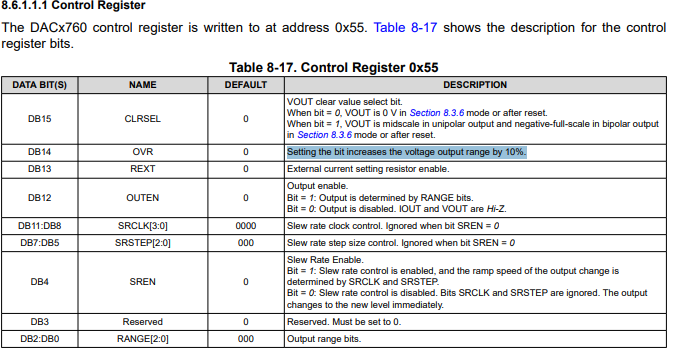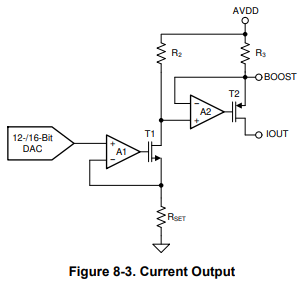Tool/software:
The DAC8760 has calibration limitations: zero calibration cannot be performed to negative values, and gain calibration cannot be performed to 1.5 times full scale.
The chip is powered from -15V to +15V, the thermal pad is connected to -15V, and the voltage output range is selected from 0 to 5V.
Zero calibration cannot cause the output to fall below 0V. That is, when the zero calibration data is between 0 and 0x7FFF, the output voltage is between 0 and 2.479V. When the zero calibration data is between 0x8000 and 0xFFFF, the output voltage remains at 0V. Shouldn't it be between 0 and -2.479V?
Gain calibration cannot cause the output to exceed 4.96V. That is, when the gain calibration data is between 0 and 0x7FFF, the output voltage is between 2.479V and 4.96V (when the voltage output range is selected from 0 to 5V). When the gain calibration data is between 0x8000 and 0xFFFF, the output voltage remains at 4.96V. Shouldn't it be between 4.96V and 7.5V?





